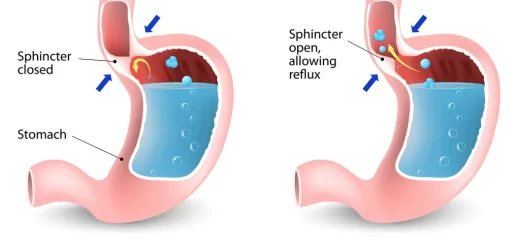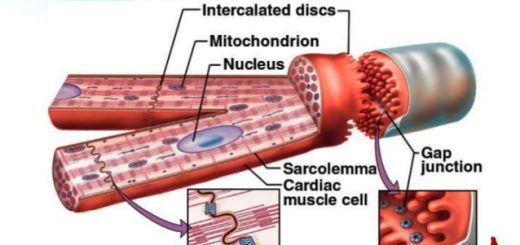Histogenesis of Bone, Repair of Bone fractures, Steps of Bone Growth
Bone is a specialized and mineralized connective tissue, It makes up, with cartilage, the skeletal system, Bone formation in a developing embryo occurs through one of two processes: either endochondral or intramembranous osteogenesis (ossification). Intramembranous ossification is characterized by the formation of bone tissue directly from the mesenchyme.
Bones function
Bone serves three main functions: The mechanical function as support and site of muscle attachment for locomotion; a protective function for vital organs and bone marrow; and a metabolic function as a reserve of calcium and phosphate used for the maintenance of serum homeostasis, which is essential to life.
A fourth function has been attributed to bone tissue – that of an endocrine organ. Bone cells can produce fibroblast growth factor 23 (FGF23) & osteocalcin. FGF23 can regulate phosphate handling in the kidney and osteocalcin regulates energy and glucose metabolism.
Histogenesis of Bone (Osteogenesis)
Bone can be formed initially in either of two ways:
- Intramembranous ossification: in which osteoblasts differentiate directly within a membrane of mesenchymal tissue and begin secreting bone matrix.
- Endochondral ossification: in which the matrix of the preexisting hyaline cartilaginous model is eroded and replaced by osteoblasts producing bone matrix.
In both types, the bone tissue that appears first is primary or woven bone and is soon replaced by the lamellar bone. During osteogenesis of all types of bone, areas of woven bone, areas of resorption, and areas of lamellar bone usually appear side by side.
Intramembranous ossification
- During embryonic life, it results in the formation of flat bones.
- During postnatal life, it increases the width of long bones.
Steps of intramembranous ossification
- Development of one or more ossification centers by condensation of mesenchymal connective tissue in the area of the developing bone with increased vascularity to provide enough minerals needed for bone formation.
- Mesenchymal cells, in response to specific growth factors and enough oxygen tension, proliferate, and differentiate into osteoprogenitor cells.
- Osteoprogenitor cells proliferate and differentiate into osteoblasts that start forming the bone matrix, then, in turn, osteoblasts transform into osteocytes.
- Trabeculae of developing bones are formed and fuse together giving the spongy bone with bone marrow cavities in between.
Endochondral (Intracartilaginous) ossification
- During embryonic life, it results in the formation of long bones. Many parts of the skeleton are laid down first as hyaline cartilage.
- Later in the fetal and early postnatal life; these cartilaginous models become gradually replaced by bone tissue except in two places: the epiphyseal plate and the articular cartilage covering the articular surfaces of bones.
Growth of bone
During postnatal life, bone formation occurs for:
- Growth of bone, which includes an increase in length, increase in width, and bone remodeling.
- Repair of bone fractures.
Increase in length of long bone: bone growth in length by endochondral ossification.
Steps of Endochondral Bone Formation
It can be studied through the examination of a longitudinal section of the growing end of a long bone (the epiphyseal plate of hyaline cartilage) in which the following zones are seen starting from the epiphyseal side of cartilage:
- Zone of resting cartilage: chondrocytes do not show any signs of activity. It is the zone of reserve cartilage.
- Zone of proliferation and arrangement: chondrocytes, responding to growth hormones, undergo a process of interstitial growth forming longitudinal rows resembling stacks of coins.
- Zone of hypertrophy: chondrocytes accumulate large amounts of glycogen in their cytoplasm. They appear enlarged and pale. Accordingly, the matrix is compressed into thin septa between the chondrocytes.
- Zone of calcification: the hypertrophied chondrocytes start to release alkaline phosphatase enzyme causing calcification of the cartilage matrix. In H & E sections the pale bluish staining of hyaline cartilage is intermingled with the reddish staining of the calcium salts deposited in the matrix. The insoluble calcium salts in the matrix interfere with the diffusion of sufficient nutrients to the hypertrophied chondrocytes. This results in their degeneration and death leaving empty cavities.
- Zone of ossification: Capillaries and osteogenic cells grow from the diaphysis and from the periosteum to occupy the empty cavities. Osteoblasts lay down bone matrix on the calcified cartilage remnants. When they become entrapped within lacunae, they are changed to osteocytes. This process proceeds resulting in the formation of woven bone which will be replaced by lamellar compact bone surrounding a single marrow cavity.
The epiphyseal plate is responsible for maintaining an increase in the length of long bone
- Because the rates of these two opposing events (proliferation and destruction) are approximately equal, the thickness of the epiphyseal plate does not change. Instead, it is displaced away from the middle of the diaphysis, resulting in growth in the length of the bone.
- Growth of long bones stops at adulthood when the epiphyseal plates are eliminated (closure of the epiphysis). Once the epiphysis is closed, an increase in the length of the bone becomes impossible.
- Different bones have different times of closure of their epiphysis. This is medicolegally-useful to determine the bone age of a person, according to which epiphysis are open and which are closed.
Increase in the width of long bones: this is achieved by two parallel mechanisms:
- Subperiosteal bone formation by osteoblasts (from outside). This is an appositional intramembranous ossification.
- Bone resorption by osteoclasts at the endosteum (from inside) to enlarge the marrow cavity.
Bone remodeling
The skeleton is a metabolically-active organ which undergoes continuous remodeling throughout life. Bone remodeling involves bone resorption and bone formation. During childhood, bone formation exceeds bone resorption, while in adults; bone formation is more or less balanced with bone resorption.
Bone remodeling is important for:
- Replacement of immature bone (woven) by mature bone (lamellar).
- Renewal of bone (e.g. resorption of old osteons & formation of new ones).
- Repair of injuries like fractures and micro-damages.
- Maintenance of bone shape to adapt mechanical stresses (e.g. weight and posture).
- Maintenance of plasma calcium homeostasis.
Repair of bone fractures
Bone has an excellent capacity for repair because it contains osteoprogenitor cells in the periosteum and endosteum. and it has an excellent blood supply.
Phases of fracture healing
1- Clot formation: When a bone is fractured, the blood vessels are disrupted producing a localized hemorrhage and the bone cells adjoining the fracture site die. A blood clot is formed to stop the hemorrhage.
2- Callus formation (soft callus): The blood clot is removed by macrophages and the adjacent bone matrix is resorbed by osteoclasts. The periosteum and endosteum at the site of fracture show enhanced activity of their osteoprogenitor cells, which under these conditions of low oxygen tension, form a soft callus of fibro-cartilage-like tissue that surrounds the fracture and penetrates between its ends.
3- Callus ossification (hard callus): Primary bone formation is initiated by:
- Intramembranous ossification through the osteoprogenitor cells in the periosteum.
- Intracartilaginous ossification: Thus, histological examination of a repairing fractured bone reveals areas of cartilage together with areas of intramembranous and endochondral ossification.
As repair proceeds, a hard bone callus is formed. It is made up of irregular bone trabeculae of primary bone that unite the extremities of the fractured bone.
4- Bone remodeling: The primary bone of the callus is gradually resorbed and replaced by secondary bone. Further remodeling restores the original bone structure and contour.
Types of bones, Histological features of compact bone & cancellous bone
Back muscle anatomy, types, structure, importance & names
Bones of upper limb structure, function, types & anatomy
Bone (Osseous Tissue) types, structure, function and importance
Bones function, types & structure, The skeleton & Curvature of Spine in Adults



